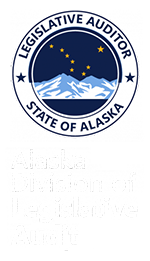Summary: There are a number of specific changes recommended in the report that will require the department to work with lawmakers, the executive branch, and through collective bargaining to finds solutions that improve the quality of the work environment for employees and allow the department to perform at a higher level.
Click here for the table of all recommendations for improving employee performance.
Key Findings for Improving Employee Performance
- The Department of Health and Social Services (DHSS or department) is currently facing challenges in both recruiting qualified staff and retaining quality employees. While recruitment and retention are a challenge in many departments of state government, some divisions in DHSS face acute deficiencies that hamper performance of its duties. (pg. 23)
- DHSS faces great challenges in recruiting and retaining employees who are required to travel extensively for their positions, particularly public health nurses and child welfare workers. (pg. 24)
Key Recommendations for Improving Employee Performance
- Reduce the caseloads for new child welfare workers to meet the enhanced federal Title IV-E reimbursement rate requirements for workers in training, as well as during the first six months of employment, and maintain manageable workloads for all workers.
(Recommendation 3.1.E.1)
(Recommendation 3.1.E.2)
(Recommendation 3.2.I.1)
Office of Children’s Services (OCS) caseworkers receive two to three weeks of training prior to assuming a full caseload. Once training is completed, caseworkers have caseloads that are triple the size recommended by the Child Welfare League of America. Currently, OCS experiences a turnover rate higher than 50 percent annually. An alternate approach to training would counter this sort of turnover rate. Rather than a two to three week training period, an extended training period of up to six months with a reduced workload would qualify for a 75 percent matching rate. OCS could use the estimated additional revenue of $768,000 to hire caseworkers and supervisors in the appropriate ratio. The report believes this approach would improve the quality of work and reduce turnover.
- Form a multi-disciplinary work team to develop a long-range plan for recruitment and retention of field workers in the department.
(Recommendation 3.1.A.1)
Poor employee recruitment and retention rates within parts of the department threaten its effectiveness and efficiency by reducing the number of qualified applicants and reducing institutional knowledge as employees leave. This team should include, at a minimum, representatives from affected divisions, the DHSS training coordinator, a fiscal representative from Finance and Management Services, and a representative from the Office of Tribal Relationships which is recommended for development.
- Develop a formal succession plan to internally cultivate future leaders and certain skilled non-management positions.
(Recommendation 3.1.B.3)
Although employee retention and recruitment issues plague the department and create a large number of vacant positions, succession plans for replacing key personnel are not formalized. Succession planning is needed even more as the agency faces a large number of potential retirements in the next few years.
- Create a master trainer program in the Division of Public Assistance modeled after the Division of Juvenile Justice program and allow eligibility workers who have low error rates (comparable to experienced employees) to take on greater caseloads as early as possible.
(Recommendation 3.1.D.1)
Under this proposed training model, a local trainer would be an experienced, high-performing staff or supervisory position and would not be solely devoted to training. The local trainers would be trained centrally in Anchorage to become “certified trainers” by a Division of Public Assistance master trainer. Certified trainers would then be responsible for providing onsite training locally and/or regionally to new Division of Public Assistance employees on an ongoing schedule that best fits local staffing needs. This should cut down on employee training travel expenses.
- Eliminate the additional four months of continued distance learning and reduced caseloads for Division of Public Assistance eligibility workers.
(Recommendation 3.1.D.2)
After participating in the two to three week core training sessions, new employees remain on limited work duty (working half of a normal caseload) for up to four months post-training. Federal requirements only specify error rates for determining eligibility for federal programs, not length or duration of training. Quality assurance protocols would pinpoint which new employees need to remain at a reduced workload, which need additional training, and which can increase their workload. Monitoring every new hire’s cases should continue for the full six months, as is done currently.

